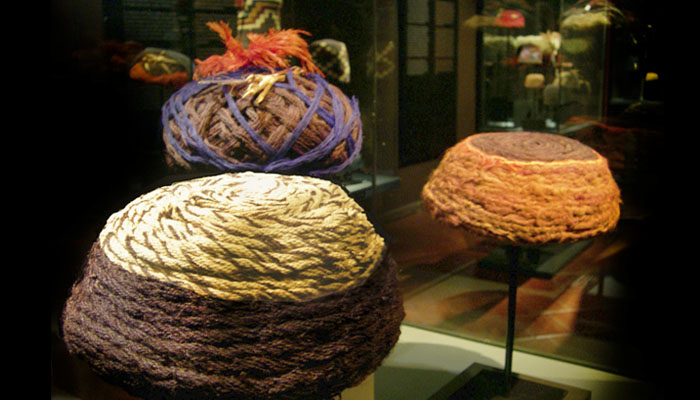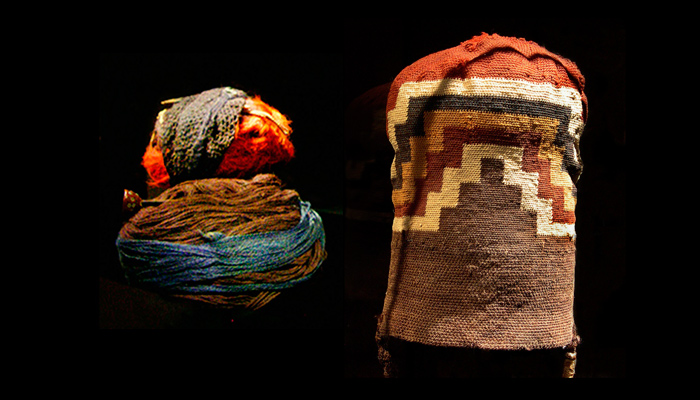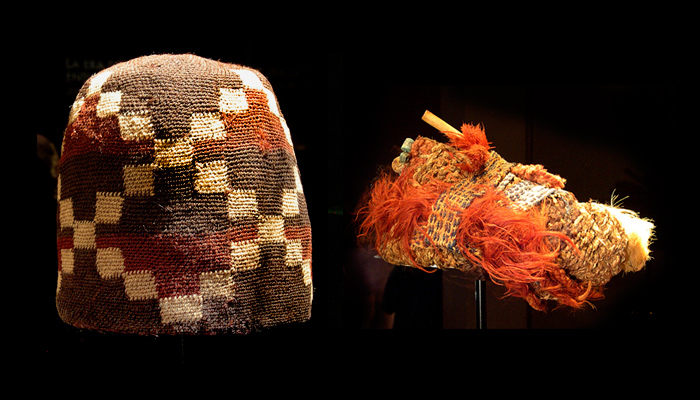The era of the turban-wearers 2000 B.C. – A.D. 500
Camelid wool was a highly valued material that the first agriculturalists wore on their heads in the form of turbans and caps.
In 2000 B.C., the societies in Northern Chile began to combine hunting, gathering and fishing with agriculture, organize themselves into larger communities, and build the region’s first villages and towns. They also started creating their first ceramic objects and metal ornaments, and using cotton and camelid wool to make garments. Through the domestication of the llama, caravan traffic assumed an increasingly important role in commercial trade, influencing the dissemination of new technologies, institutions and symbolic forms.
The inhabitants of Tarapacá forged close cultural ties with the altiplano societies – especially those of Pucara, one of Lake Titicaca’s most prestigious farming and herding kingdoms – who sought to complement their economies with lowland products. It was at this time that the first social differences between individuals appeared in these desert communities.
In contrast, the Antofagasta peoples established bonds with the societies of southern Bolivia and northwestern Argentina, with whom they shared similar levels of cultural development, and a keen interest in their counterparts’ goods. As occurred with Tarapacá, although at a later time, Antofagasta became strongly influenced by the ideology of the Lake Titicaca kingdoms.
During this period, turbans made of woolen hanks and globular-shaped hats became prevalent. The former were used primarily for funerary purposes and served to exhibit the wealth of those who had privileged access to altiplano wool. The latter are indicative of the time when loom-woven textiles began to become widespread in the desert.
Animación construcción gorro turbante






































